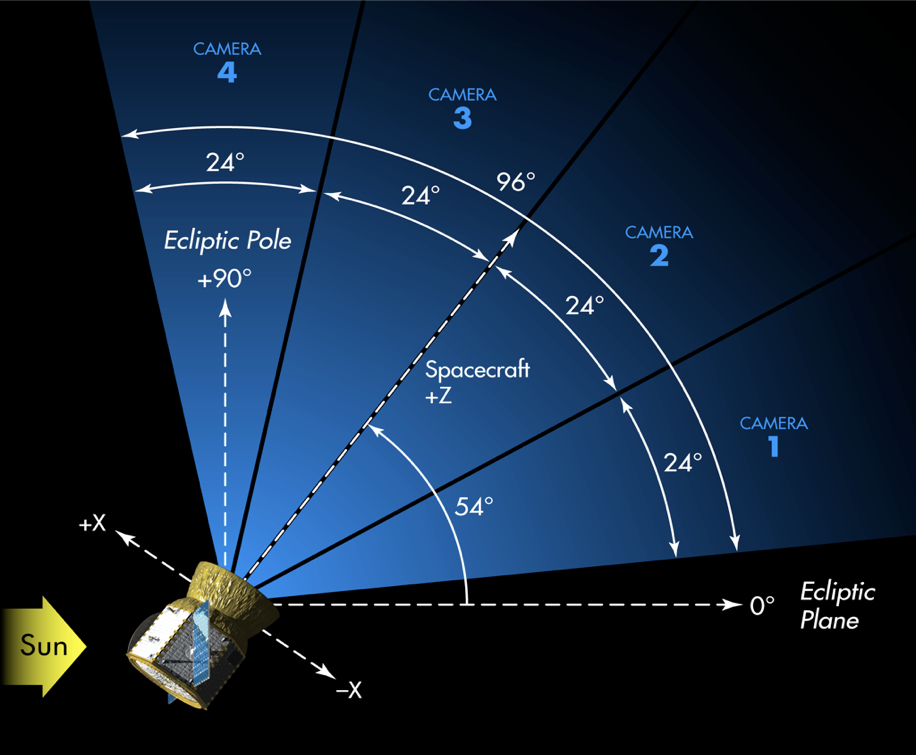Launch and Orbit
TESS is scheduled for launch via a SpaceX Falcon 9 from Cape Canaveral no earlier than March 20, 2018.
TESS will observe from a unique High Earth Orbit (HEO) that will provide an unobstructed view of its field to obtain continuous light curves and a more stable platform for precise photometry than the low-Earth orbit. The TESS orbit is elliptical, with nominal perigee and apogee of 17 and 59 Earth radii, respectively, and a 13.7-day period in 2:1 resonance with the Moon’s orbit. The orbit is above Earth’s radiation belts providing a low-radiation environment.
TESS data are returned to Earth during each orbital perigee using the Deep Space Network.
 Maneuvers for achieving the TESS mission orbit (shown in light blue). (Ricker et al. 2015)
Maneuvers for achieving the TESS mission orbit (shown in light blue). (Ricker et al. 2015)
Field of View
TESS is equipped with four CCD cameras that have adjacent field-of-views to produce a 4 x 1 array, or 'observing sector', yielding a combined field-of-view of 96 x 24 degrees


Observing Strategy
TESS will observe the southern and northern ecliptic hemispheres for 1 year each in its 2 year prime mission, beginning in the south. Each hemisphere will be observed with 13 partially overlapping sectors, each covering ecliptic latitudes from 6 degrees to the ecliptic pole. Each sector will be observed for two orbits (27.4 days) moving eastward until the hemisphere has been tiled by 13 sectors. The 26 observing sectors in the two year mission will cover over 90% of the sky. The sectors overlap at higher latitudes, with over 350 days of continuous coverage in the Continuous Viewing Zone (CVZ) at the ecliptic poles, which corresponds to the region accessible to NASA's upcoming James Webb Space Telescope.

Time Sampling
TESS will collect brightness measurements of about 200,000 preselected stars ('postage stamps') every 2 minutes, and Full Frame Images (FFIs) (all pixels) at 30 minute cadence. The TESS cameras have an exposure time of 2 seconds, and the images are stacked for each 2 or 30 minute cadence.